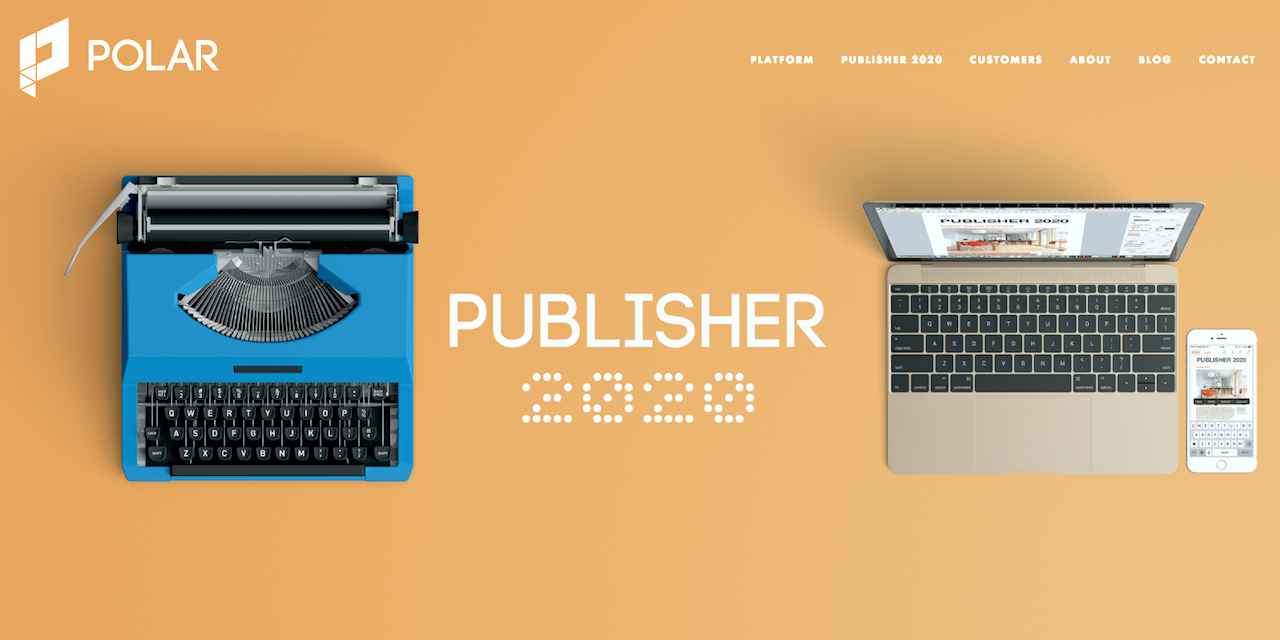Native advertising technology company Polar has convened a global trade council to address the most pressing questions the online publishing industry faces, such as what to do about declining ad revenue, ad blocking and social publishing platforms like Facebook’s Instant Articles.
The group, dubbed Publisher 2020, is made up of 14 senior executives from major publishers like Conde Nast, Gannett, The Economist, Adweek and Refinery29. Representing Canada will be St. Joseph Media president Doug Knight and Postmedia senior vice-president Yuri Machado.
Polar CEO and founder Kunal Gupta says the group won’t be focused on content marketing, but on long-term issues facing the industry.
“Publisher 2020 is extremely broad,” he said. “It covers absolutely everything about the publishing business, including asking the question ‘who is a publisher in 2020?’ Not just legacy organizations, but brands, influencers and other individuals all may fit the evolving definition of a publisher.”
Polar launched its native content management platform in 2013 and has since built up a considerable global clientbase, including The Globe and Mail, Postmedia, the Toronto Star, Conde Nast, Newscorp, Slate and the Washington Post. To date, it has served 15 billion native ad impressions.
Gupta said the significant buy-in that Publisher 2020 has seen from global publishers is “an important show of the trust and confidence” the industry has placed in Polar. “A lot of people have raised their hand to say yes, count me in.”
Publishing is “challenged on all fronts”
To kick-start the conversation, Publisher 2020 released an 81-page report that aggregates trend data from the ANA, comScore, research firms and media brands. The report highlights a handful of key trends, chief among them threats to ad quality and publisher revenue.
“Existing models are being challenged, on all fronts, ” it states.
The report depicts declining quality as both an advertiser and publisher problem. On the creative side, it points out that far more consumers find ads irritating and distracting than marketers realize, and as a result ad blocking has seen a surge of interest. According to a recent report from Adobe and PageFair, 181 million users worldwide use an ad blocker to avoid online ads, including 6.5 million Canadians.
Publishers, meanwhile, have failed to get a handle on fraud and stagnant viewability rates. The report quotes an Ad Age article claiming that Kraft rejects as much as 85% of the impressions it accesses through programmatic due to quality issues and lack of transparency.
Some buyers, like Videology, claim they reject north of 90% of RTB impressions.
A more recent and dramatic threat to publishers has been the push by social platforms to publish content directly, rather than direct users back to the publisher’s site. Facebook is leading the charge on this front with its new Instant Articles feature. Designed to speed up load times for mobile users, Instant Articles hosts publisher content within Facebook’s app, but it also means that ad revenues and audience data are filtered through Facebook.
While Facebook has offered publishers 100% of the ad revenue it generates, publishers have nonetheless complained that it has heavily restricted the number and format of ads they can run, ultimately cutting into their income.
Publishers have expressed similar frustrations with declining referrals from platforms like Apple News and LinkedIn.
Gupta said collaboration has to be the starting point for the industry to respond to the threats it faces. In addition to discussions with the founding members, Publisher 2020 held an event in the U.K. last week where it hosted roundtables and workshops with 50 publishing leaders, to discuss some of the issues and trends raised in the report.
“It’s a lot of fun,” Gupta said. “People have so much energy and ideas, there’s so much hope and optimism versus the doom and gloom that people often think about.”











